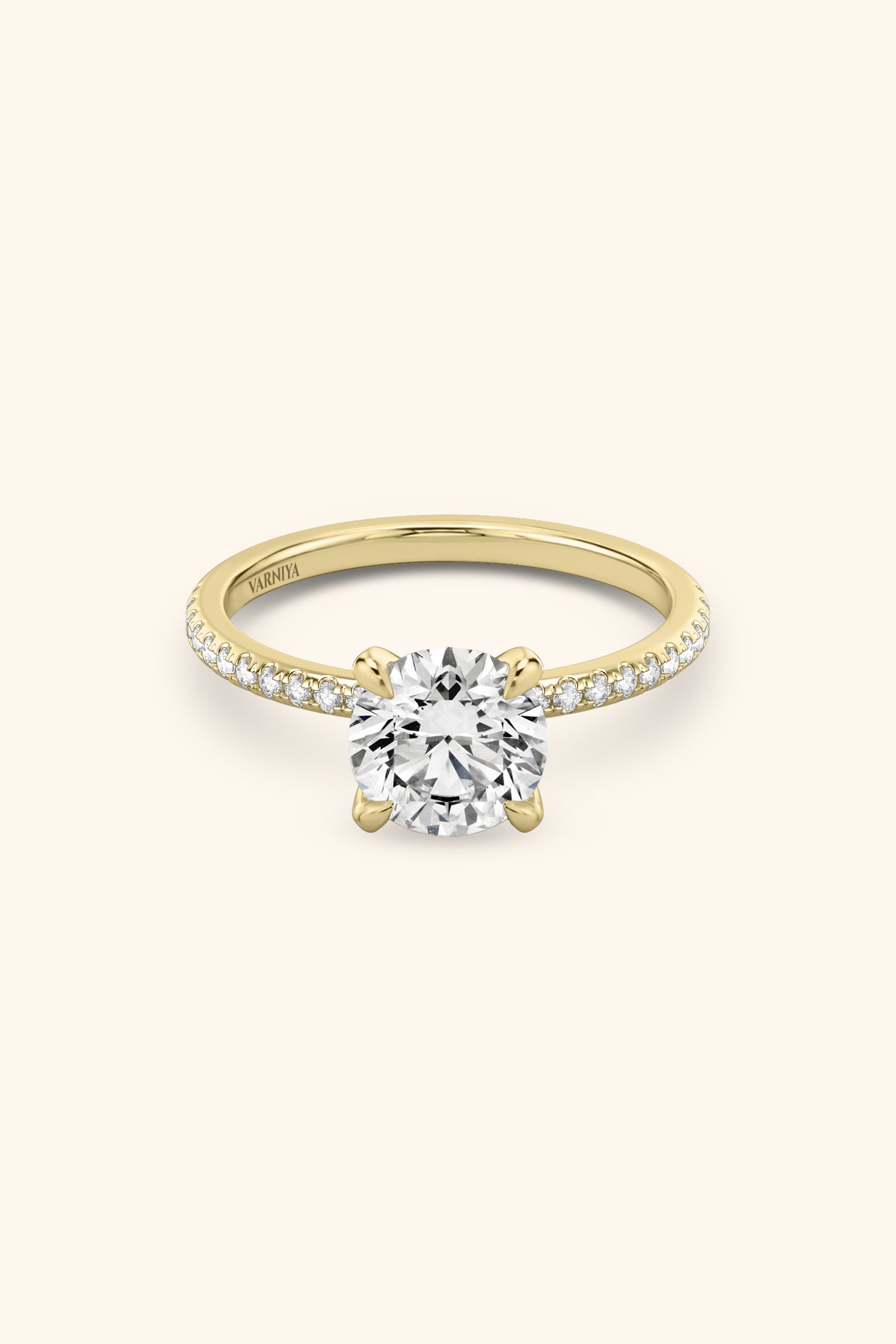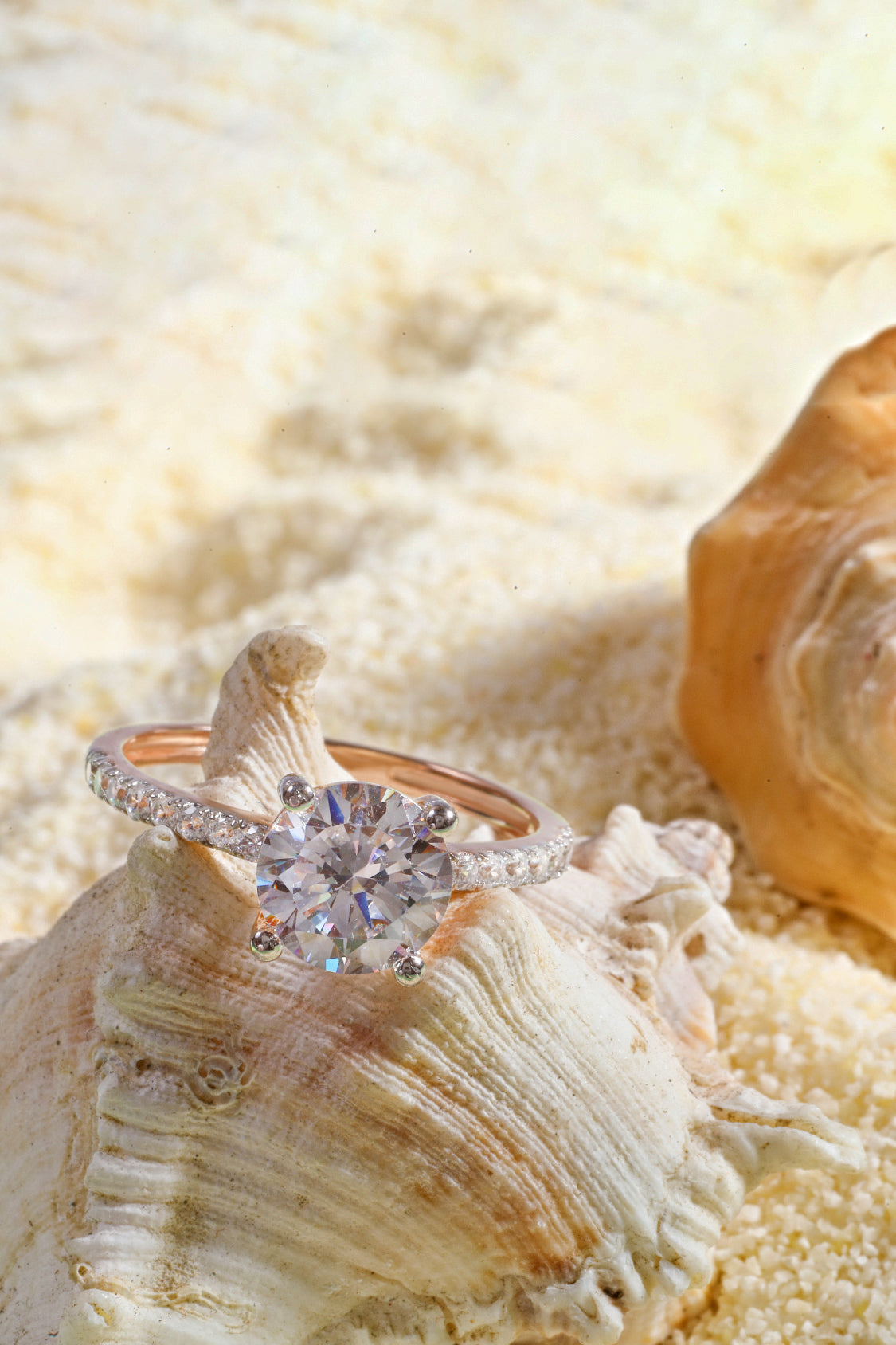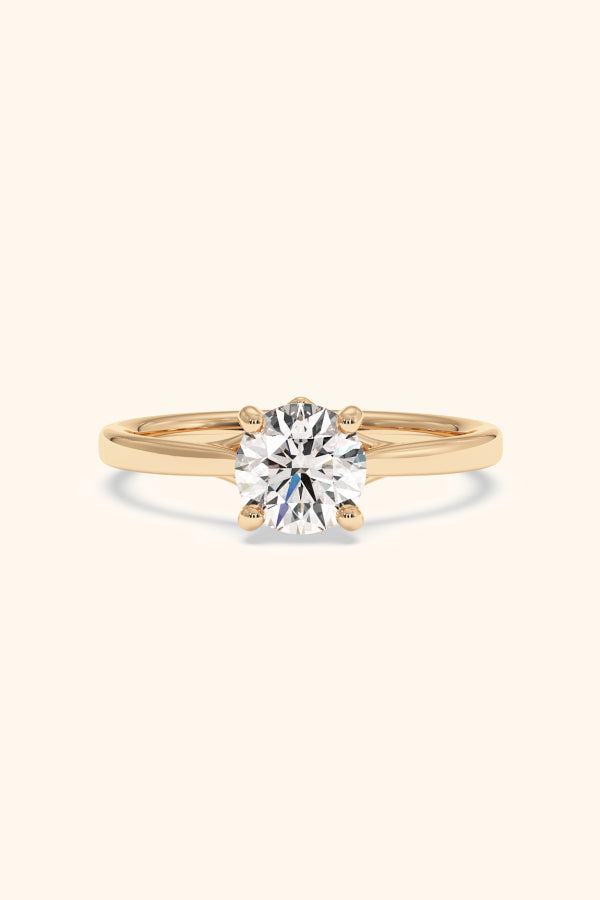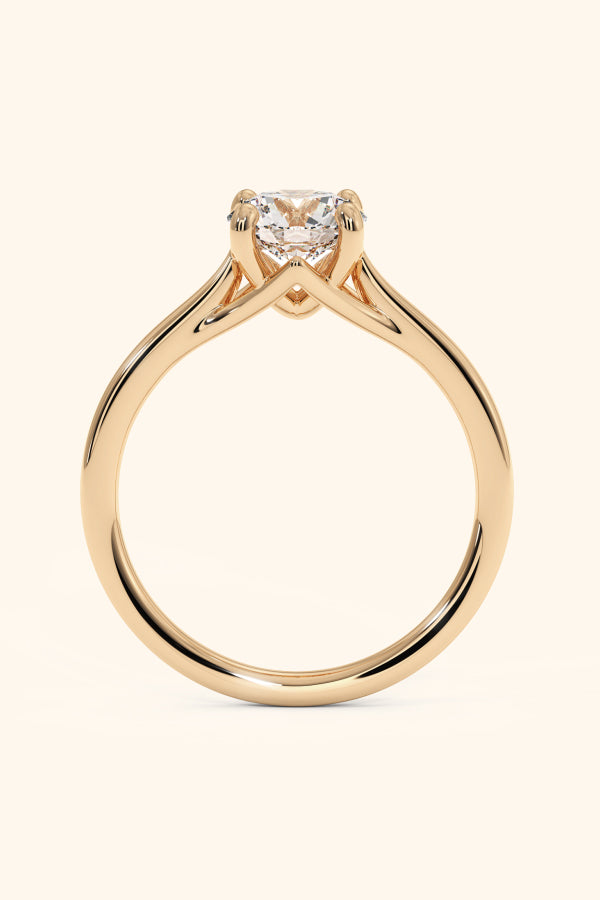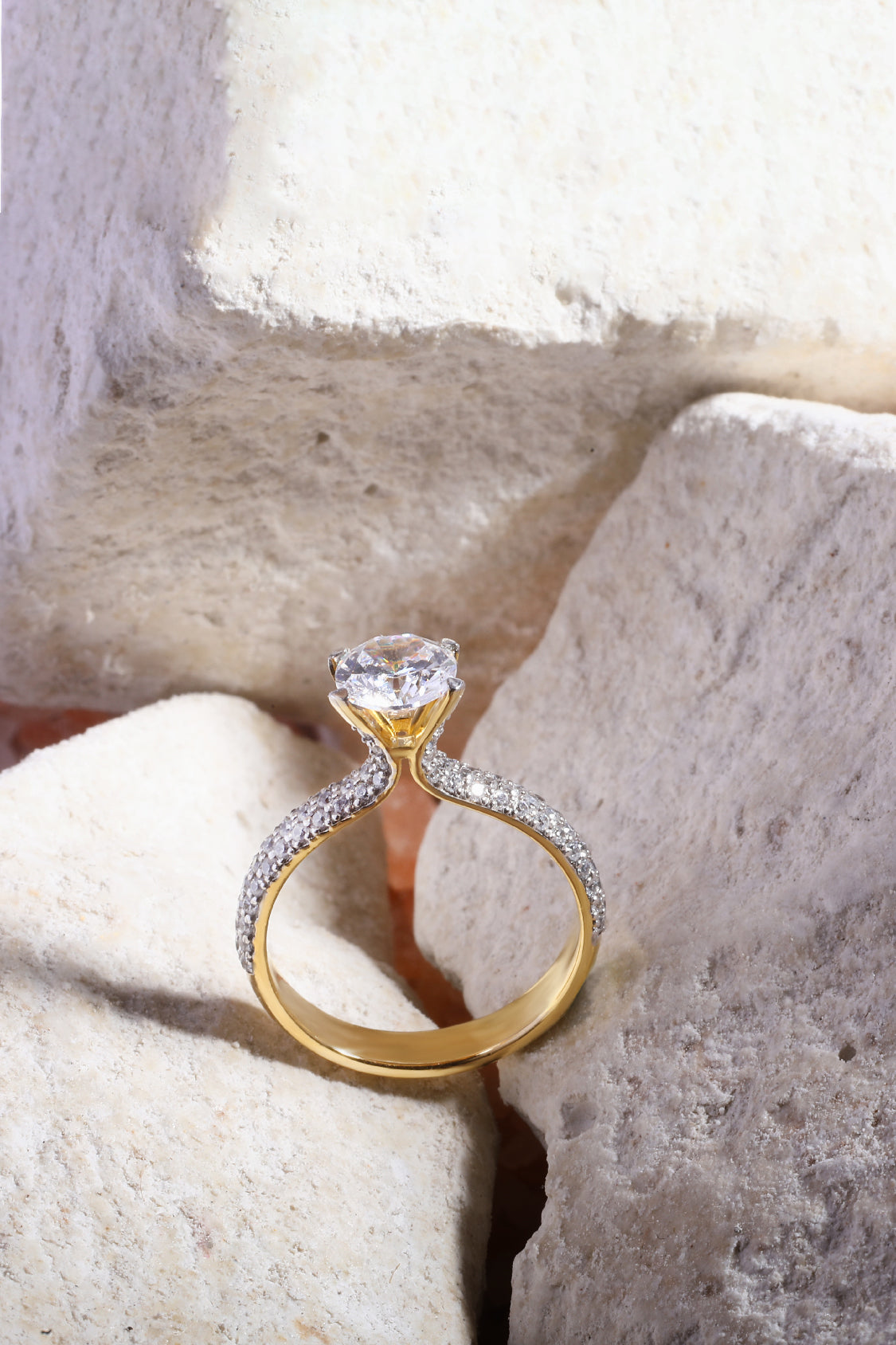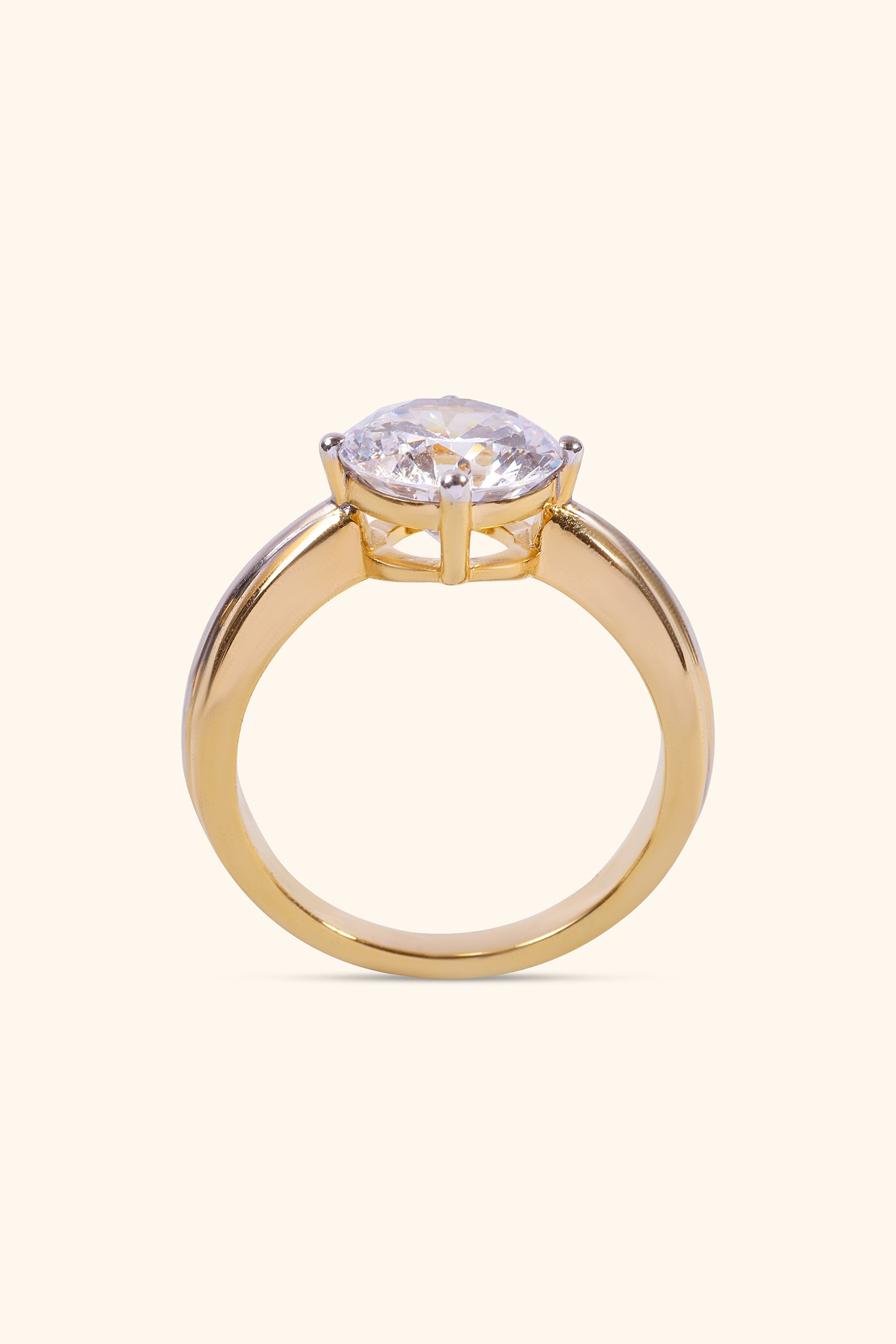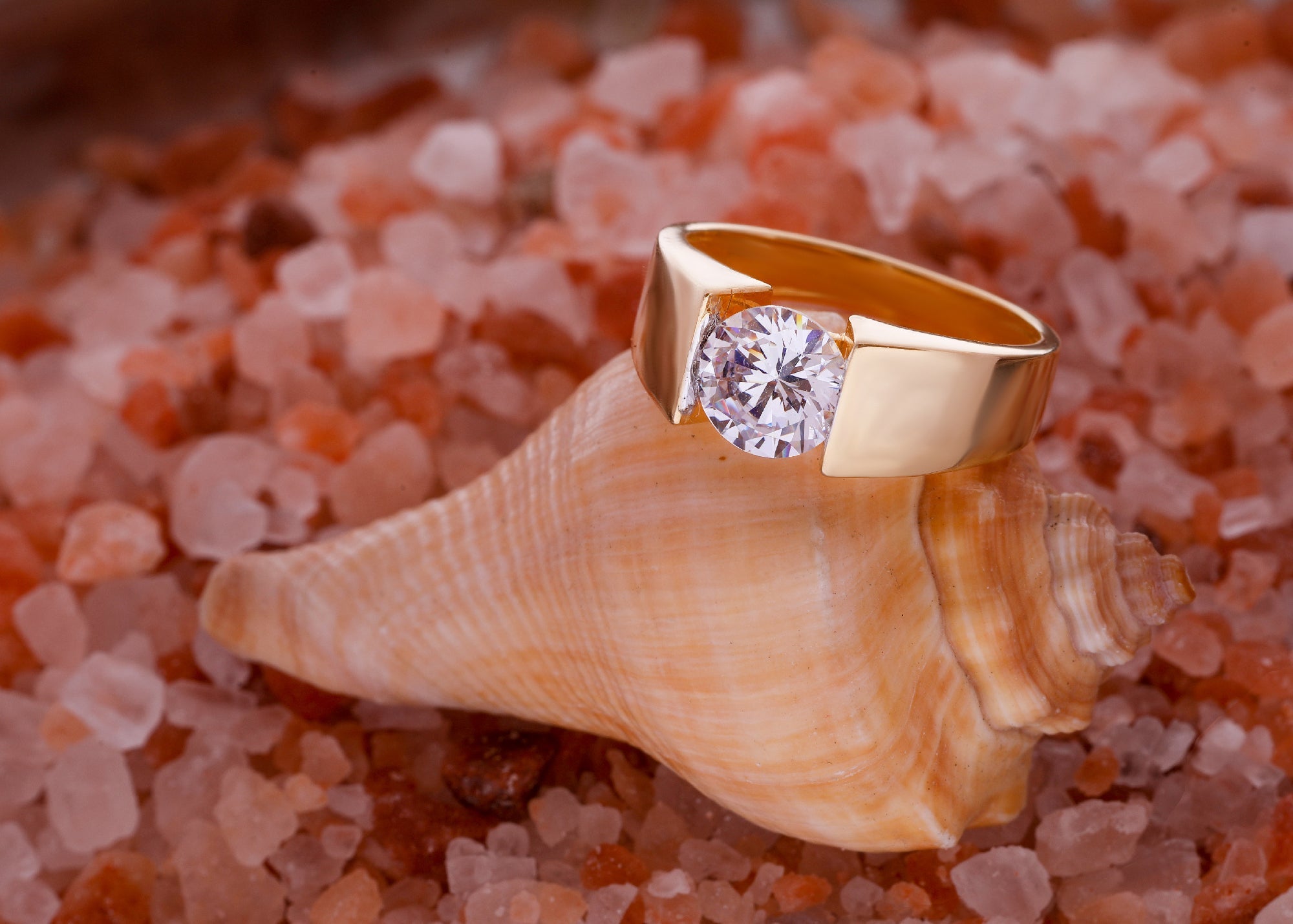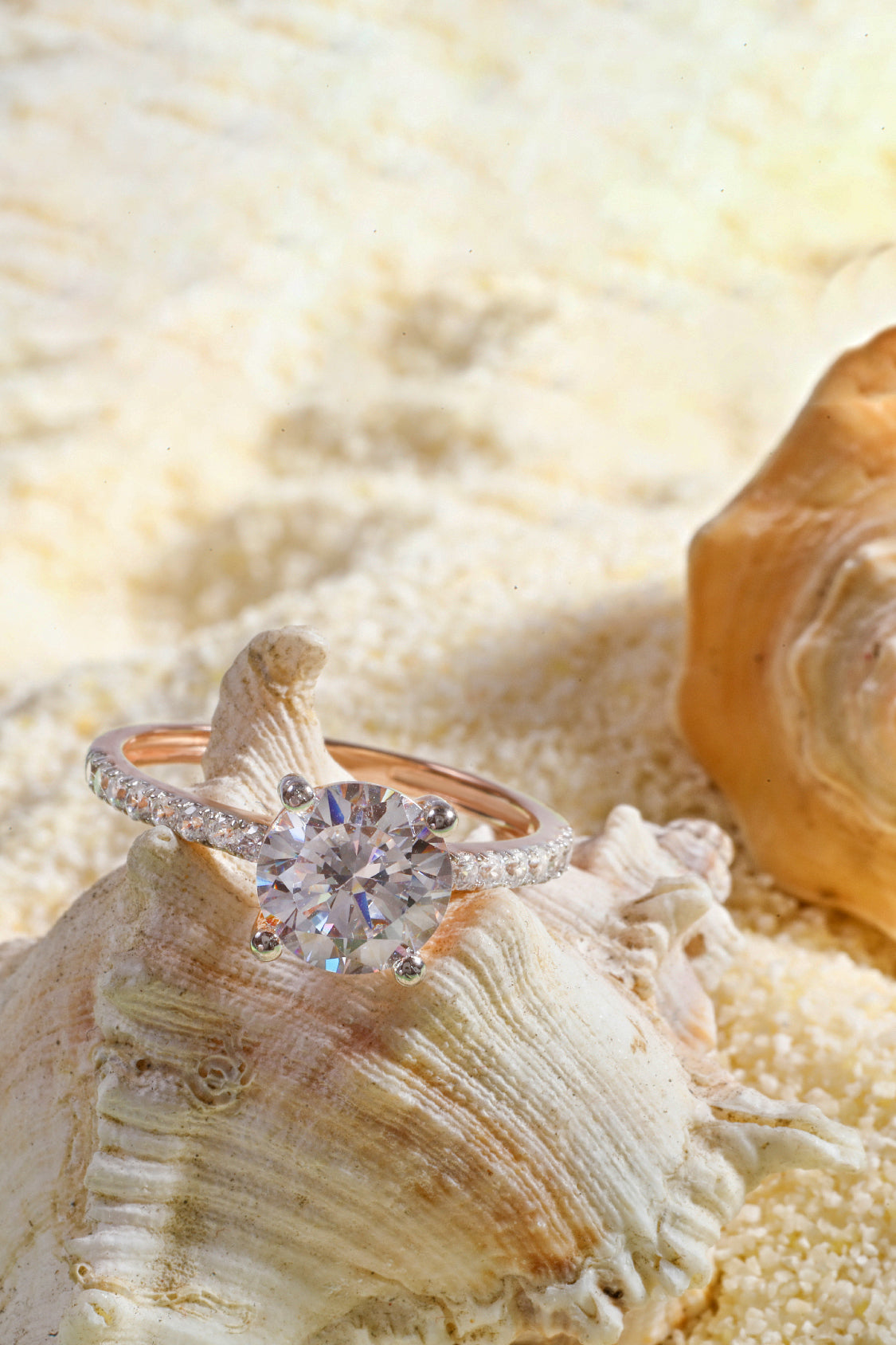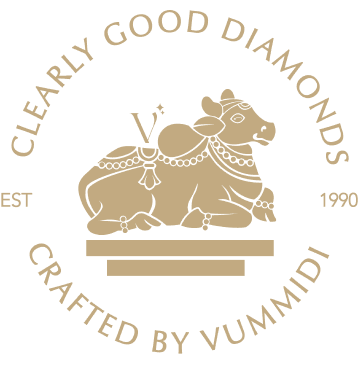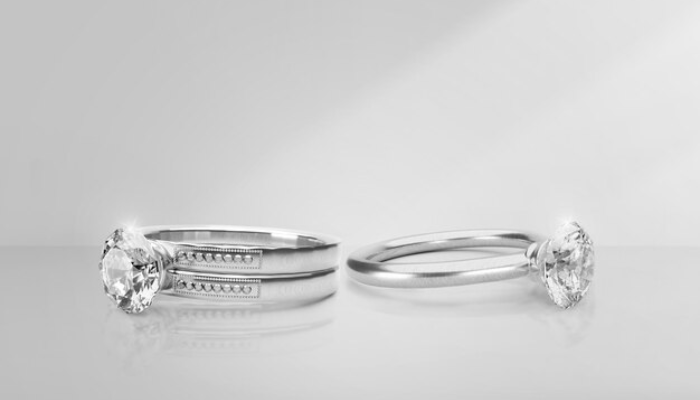
Know the Difference Between White Gold and Platinum Engagement Rings Before Buying
Not sure which to choose? Know the difference between white gold and platinum engagement rings — cost, durability, and what jewelers won’t tell you.
Thinking about buying an engagement ring but stuck between white gold and platinum? You’re not alone. Most buyers face this exact dilemma between durable metals —and not enough jewelers break it down clearly.
Ultimately, the choice between white gold and platinum often comes down to personal preference, as each metal offers unique benefits and aesthetic qualities.
White gold and platinum may look similar, but they’re not the same metal. One needs rhodium plating, the other develops a patina. And cost? Big difference.
According to the Natural Diamond Council, lab-grown diamonds paired with white gold can cost up to 60% less than natural ones in platinum.
If you’re spending serious money on a ring, you deserve to know exactly what you’re buying. Let’s get straight to it.
White Gold vs Platinum Engagement Rings: Quick Overview
| Feature | White Gold | Platinum |
|---|---|---|
| Color | Bright white (due to rhodium plating) | Naturally white metal |
| Material Composition | Pure gold mixed with nickel, palladium, or zinc | 90–95% pure platinum with iridium or ruthenium |
| Durability | Strong, but rhodium coating wears off over time | Extremely durable and less prone to thinning |
| Maintenance | Requires rhodium re-plating every 1–2 years | Low maintenance—no plating needed |
| Weight | Lighter and more comfortable for daily wear | Heavier—gives a premium, sturdy feel |
| Skin Sensitivity | May contain nickel—can irritate sensitive skin | Hypoallergenic—ideal for metal allergies |
| Patina Development | Needs polishing to stay shiny | Develops a soft, vintage-like patina over time |
| Initial Price | ₹35,000–₹85,000 (with lab diamond, 18ct gold setting) | ₹65,000–₹1.5 lakh+ (with same stone specs) |
| Resale Value | Moderate — value depends on gold content and demand | Higher — platinum is rarer and holds value better |
| Customization | Easy to resize or modify | Harder to resize due to metal density |
| Long-Term Value | May require more maintenance over time | Long-lasting with minimal upkeep |
| Ideal For | Budget-friendly, customizable, modern look | Premium, timeless, allergy-safe, durable choice |
What Is White Gold?
You might think white gold is a naturally white metal like silver or platinum—but it’s not. White gold is made by mixing pure gold with other metals like nickel, zinc, or palladium. This blend gives it a paler, off-white color.
Pure gold is very soft. That’s why jewelers mix it with stronger materials to make it more durable for everyday wear. However, white gold's rhodium plating can wear off over time, which may expose the underlying alloys.
One popular choice is 18ct white gold, which means 75% of the piece is pure gold, and 25% is made of tougher metals. This makes it a great option for rings, including white gold engagement rings and wedding bands.
This is particularly important for individuals with sensitive skin, as the exposure to nickel in the alloy can cause an allergic reaction.
How It’s Made and Why It Needs Rhodium Plating
-
After mixing the metals, white gold still looks slightly yellow or off-white.
-
So, jewelers coat it with rhodium, a shiny and naturally white metal from the platinum family.
-
This rhodium plating gives white gold its famous silvery finish and polished shine.
-
It also helps protect against small scratches and tarnish.
Platinum is a dense metal, but it’s not 100% pure in most jewelry. It’s usually mixed with:
-
Iridium
-
Cobalt
-
Or ruthenium for durability
Platinum jewelry is typically 95% platinum and 5% cobalt or other metals, while 18ct white gold is made of 75% gold and 25% other metals.
According to the Gemological Institute of America (GIA), rhodium plating is standard in white gold rings, but it requires regular maintenance to look new.
What Is Platinum?
Platinum is a naturally white metal that’s rare, strong, and used in fine jewelry. It’s more expensive than white gold—but also more durable.
In fact, platinum is about 30 times rarer than gold, making it a unique and valuable choice for jewelry. Platinum's density makes it heavier than white gold, which contributes to its durability and luxurious feel.
Unlike white gold, platinum doesn’t need rhodium plating to stay shiny. It has a silvery white appearance on its own. That makes it a great choice for people with sensitive skin or metal allergies, because it’s a hypoallergenic metal.
Even though it costs more, you get a lot for your money. Platinum is a precious metal—denser than gold—and it holds diamonds tightly in place. That’s why many high-end platinum engagement rings use it for prongs.
While platinum is durable, it resists scratches differently compared to white gold, often developing a unique patina over time.
Key Reasons to Choose Platinum:
-
Durability: It’s one of the most harder metals, great for everyday wear.
-
Safe for skin: Ideal if you have nickel allergy or metal allergies.
-
Low maintenance: No re plating needed.
-
Premium look: Keeps its shiny finish without coating.
-
Secure for stones: Perfect for rings with small diamonds.
Platinum vs White Gold Jewellery: Key Differences You Should Know
If you’re stuck choosing between platinum jewellery and white gold jewellery, you’re not alone. On the outside, both shine with a beautiful, silvery finish. But what’s inside—and how they wear over time—makes a big difference.
Let’s break it down so it’s easy to decide what suits your lifestyle, budget, and skin.
Platinum Jewellery: Why It’s a Premium Choice
Generally speaking, platinum is considered a premium choice for those looking for durability and hypoallergenic properties. Platinum is rare, strong, and hypoallergenic. It’s a precious metal known for lasting years without losing shine.
-
It’s a naturally white metal, so no rhodium plating is needed.
-
Great for people with sensitive skin or nickel allergy.
-
Heavier than gold—some say it feels like a perfect metal for high-end rings.
-
Doesn’t wear thin like gold—less chance of damage to prongs holding small diamonds.
-
Over time, it develops a soft patina, giving it a vintage look. Some love it, others prefer to polish it.
Choose platinum jewellery if you want something long-lasting, low maintenance, and premium-feeling.
White Gold Jewellery: Popular for Customization and Shine
White gold is elegant and more affordable, making it a popular choice for fine jewelry. It’s made by mixing pure gold with other metals like palladium or nickel. However, recent increases in gold prices have made white gold more expensive than platinum in some cases.
White gold's affordability and customizable nature make it a popular choice for many couples.
-
To get that bright, white look, it’s coated with rhodium plating.
-
Over time, this coating wears off, so you may need re plating every 1–2 years.
-
It’s lighter than platinum, which some find more comfortable.
-
Comes in styles that pair beautifully with rose gold, yellow gold, or even two metals together.
-
Perfect for custom jewelry—it’s easy to reshape or resize.
Tip: If you want fine jewelry that looks luxe without going over budget, white gold is a smart pick.
What Makes 18ct White Gold Special?
If you’re looking for a mix of beauty and strength, 18ct white gold is a great choice. Among white metals, 18ct white gold stands out for its balance of beauty and strength.
It’s made from pure gold mixed with other metals like palladium or silver to make it harder. This blend gives you that bright, elegant look—but with better durability than soft metal gold alone.
Unlike yellow gold, 18ct white gold has a cooler, more modern tone. It’s usually coated with rhodium plating for a shinier, pure white metal finish.
Here’s why people love it:
-
Stronger than 22ct gold but still rich in value (75% pure gold)
-
Looks almost identical to platinum but costs less
-
Great for fine jewellery, wedding rings, and white gold engagement rings
-
Easier to customize and resize than platinum jewellery
⚠️ Just know: The rhodium coating plating wears over time. You’ll need re plating every few years to keep the shine.
Many couples choose 18ct white gold for its mix of strength, shine, and affordability.
Buy Lab Diamond White Gold Engagement Ring - VARNIYA
Varniya's collection features a variety of designs, from classic solitaires to intricate pavé settings, all crafted with precision and care.
The use of 18K white gold ensures durability and a lustrous finish, while the lab-grown diamonds provide the same brilliance and quality as mined diamonds, often at a more accessible price point.
This combination makes Varniya's offerings an excellent choice for those seeking a beautiful, responsible, and cost-effective engagement ring
👉 Explore the full collection here
Why Choose Lab-Grown Diamonds with White Gold:
1. Ethical and Sustainable
-
Lab-grown diamonds are conflict-free and eco-conscious—ideal for mindful buyers.
-
White gold, made with other metals and rhodium-plated for shine, supports a clean and timeless look.
2. Brilliant Yet Affordable
-
Lab-grown diamonds cost up to 40% less than mined ones.
-
You can choose bigger stones, better clarity, or even a custom design—without overspending.
3. Crafted for Elegance
-
White gold jewellery complements all skin tones with its silvery white appearance.
-
Varniya’s rings are made with 18ct white gold for lasting quality and shine.
Explore These Sub-Categories on Varniya:
1. Classic Solitaire Rings: Simple, timeless, and elegant.
2. Halo Engagement Rings: Surrounded by sparkle for added brilliance.
3. Pavé Band Rings: Intricate detail, luxurious finish.
4. Customizable Designs: Choose your diamond, setting, and even engraving.
💬 Need help choosing the perfect ring? Book a free design consultation with Varniya’s experts and create a piece that’s truly one-of-a-kind.
Other Metals Used in White Gold and Platinum Rings
You might think a white gold ring or platinum ring is made from just one metal—but that's not the case. Jewelers often mix in other metals to make the ring stronger, shinier, or even more affordable.
What’s in White Gold?
White gold isn’t naturally white. It’s made by mixing pure gold with metals like:
-
Palladium
-
Silver
-
Nickel (not great for people with metal allergies)
Then it’s coated with rhodium plating for that shiny, white look. This layer can fade over time, which is why white gold requires rhodium plating every few years. Also, some versions use yellow gold mixed with other materials to create different tones.
What’s in Platinum Rings?
Platinum is a dense metal, but it’s not 100% pure in most jewelry. It’s usually mixed with:
-
Iridium
-
Cobalt
-
Or ruthenium for durability
Even so, it’s still considered a precious metal and is loved for its strength and natural shine. Plus, platinum develops a soft natural patina over time, which many find charming.
💡 So next time you're comparing the difference between white gold and platinum engagement rings, don’t forget—other metals matter too.
Why Choose Platinum for Hypoallergenic Properties
If you have sensitive skin, platinum might be the safest metal for your jewelry. Why? Because it’s a naturally hypoallergenic metal—that means it’s less likely to cause allergic reactions. This makes platinum an excellent choice for individuals with skin sensitivities.
Unlike white gold, which often contains nickel (a common allergen), platinum is almost always pure. That’s a big deal for people who react to mixed or plated metals.
Platinum is also a dense metal, which makes it more durable for everyday wear. It doesn’t need rhodium plating, and it won’t wear down as quickly as white gold jewellery. Platinum engagement rings generally require polishing every few years but do not require plating like white gold.
If you’re choosing between platinum or white gold, this is something your skin—and wallet—will thank you for in the long run.
Key Reasons to Pick Platinum:
-
Great for metal allergies and sensitive skin
-
No need for re-coating or rhodium plating
-
A rare metal that keeps its natural color over time
-
A perfect metal for long-lasting, hypoallergenic properties
👉 Fun fact: According to the Platinum Guild International, platinum is 95% pure in most jewelry. That’s much higher than most white gold rings.
Jewellery Care and Maintenance
Proper care and maintenance are essential to keeping your engagement ring looking its best. White gold and platinum require different types of care, as they have distinct properties.
White gold, for example, requires rhodium plating to maintain its white color, which can wear off over time. Platinum, on the other hand, develops a soft patina over time, which can be polished to restore its original shine.
White Gold Ring or Platinum Ring for Wedding Rings and Bands?
Choosing between a white gold ring and a platinum ring for your wedding bands? It depends on what matters most to you—look, price, or strength.
When choosing metals for both your engagement ring and wedding band, consider how they will wear over time and their compatibility.
White gold is made by mixing pure gold with other metals. It gets a shiny finish from rhodium plating, but that layer wears off over time. White gold engagement rings need to be replated every 2-3 years to maintain their brightness due to rhodium plating. You may need replating every few years.
Platinum, on the other hand, is a rare metal. It’s naturally white and doesn’t need plating. It’s also heavier and more durable, which means it can handle everyday wear better.
If you’re worried about sensitive skin, platinum may be better. It’s known for its hypoallergenic properties, while white gold sometimes contains nickel, which can cause reactions.
Here’s a quick comparison:
-
Budget-friendly? White gold.
-
Low-maintenance? Platinum.
-
Shinier at first? White gold.
-
Better for allergies? Platinum.
So, when deciding on a wedding ring, think about long-term use and your skin’s needs. Still unsure? Try on both and see what feels right for you.
FAQs
1. Can you re-plate a white gold ring easily?
Yes, you can. Most white gold rings are coated with rhodium plating to give them a bright, shiny look. Over time, this plating wears off. But the good news? You can re-plate it at most jewelry stores.
It's a quick process that brings back that silvery finish. If you want low maintenance, platinum or white gold makes a big difference—just know that white gold will need more touch-ups.
2. Does platinum lose its shine or develop a patina?
Yes, platinum engagement rings do develop what’s called a natural patina. It's not damage—it’s a soft, dull finish that happens with wear. Some people love this aged look.
Others prefer the high shine. Either way, a simple polish brings back its brightness. This happens because of platinum’s density, which makes it strong but also changes how it reflects light.
3. Is platinum worth the higher price tag?
It depends on what matters to you. Platinum is a precious metal and usually more expensive than white gold. But it’s also more durable. You don’t need to re-plate it.
It’s a dense metal, naturally white, and doesn’t lose metal when scratched—it just shifts. That’s why platinum and white gold aren’t equal in the long run. Platinum wins for lasting value.
4. Which is better for people with sensitive skin?
Platinum is your best bet. It’s a hypoallergenic metal and great for those with sensitive skin or nickel allergies. Some yellow gold or white gold rings may contain alloys that cause irritation.
If you're unsure, always ask about the gold content and whether the ring has been alloyed with nickel.
Choosing between white gold and platinum engagement rings isn’t just about looks—it’s about lifestyle, budget, and skin sensitivity. If you want shine on a budget, white gold is smart. If you want durability and fewer touch-ups, go with platinum. Now that you know the difference, pick what fits you best.


